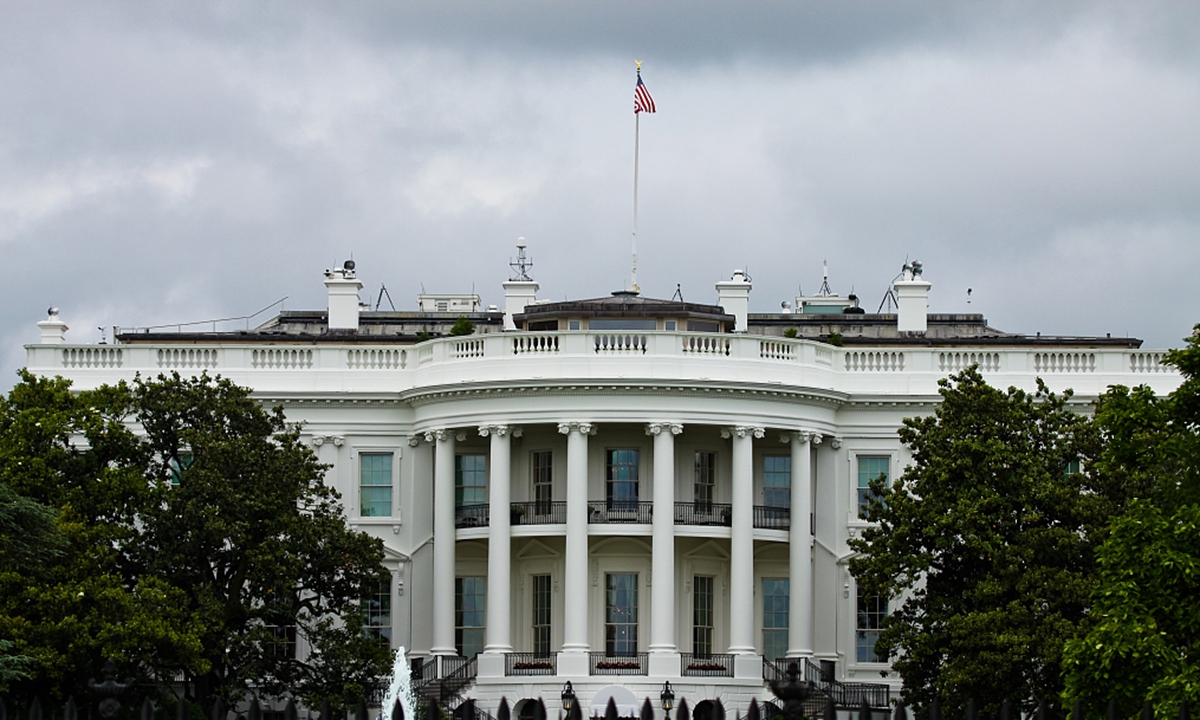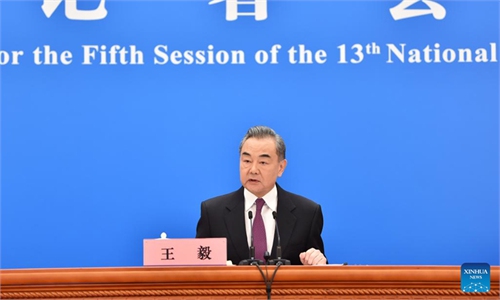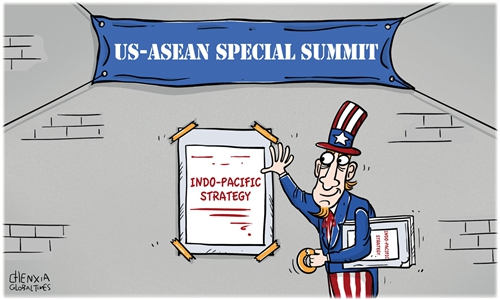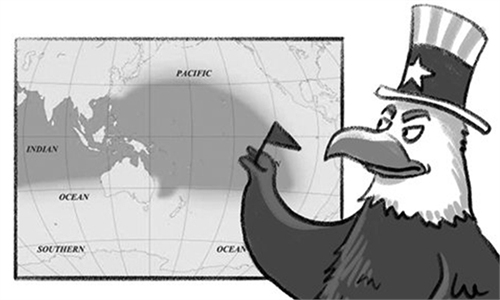
White House Photo: VCG
The White House has reportedly indefinitely postponed a "historic" summit with leaders from across Southeast Asia which was scheduled to be held this week. This indicates there are more hurdles than expected for the US to impose its invidious plans to contain China such as the Indo-Pacific Economic Framework on the regional countries.To coerce Association of Southeast Asian Nations (ASEAN) countries in Washington's geopolitical game to confront China, the Biden administration has been sending trade and diplomatic officials to the region to prepare a face-to-face summit this month at the White House, but the attempt has apparently encountered a setback.
The gathering set to take place on Monday and Tuesday has been indefinitely postponed, according to Politico.com. Earlier this month, Cambodia's foreign minister said the summit has been postponed because some ASEAN leaders cannot attend the meeting on the proposed dates, Reuters reported.
Currently, no further reasons have been disclosed as to why the meeting was put off, and the agenda of the meeting has not been made public, but some experts noted that there are still many differences between the US and ASEAN countries on the related issues that meeting may touch upon.
Even if the meeting can be held in the future, there is little hope for them to address those differences.
Since the US President first announced his administration's intention to craft an Indo-Pacific Economic Framework at the virtual summit between the US and ASEAN last October, to what extent the US can bring up feasible measures and commitment to deepen US trade and investment cooperation with the region has been seen as a key metric to gauge Washington's sincerity, or simply to woo ASEAN to take a side and balance China.
Although the Biden administration rushed to announce the Indo-Pacific Economic Framework in its Indo-Pacific Strategy report ahead of the scheduled meeting with ASEAN this month, it did not provide a detailed economic and trade cooperation plan to promote prosperity in Southeast Asia. Instead, the document has made its intention clear to build a circle in the economic field to confront China.
In a sign of the behind the scenes chaos, the US Commerce Department and Office of the US Trade Representative said it is seeking public comment on what the Indo-Pacific Economic Framework should entail. The US said the plan focuses on issues like supply chain resiliency, decarbonization and clean energy.
The Indo-Pacific Economic Framework was designed by Washington to make up for the strategic shortcomings of the US in the economic field in the Asia-Pacific region. In 2017, the Trump administration withdrew from the Trans-Pacific Partnership (TPP), weakening the US economic policy tools in the Asia-Pacific region. The Indo-Pacific Economic Framework was proposed in an attempt to regain its influence in the economic field in the region.
The US politicians claim to promote regional prosperity, but in fact they are urging countries in the region to exclude China in terms of building up supply chains and infrastructure.
The Indo-Pacific Economic Framework actually pursues an America First approach. It is only a new weapon to serve the US geopolitical and economic goals. But as a matter of fact, even some US think tanks acknowledge that most nations in this region are reluctant to support America First unless they reap tangible benefits, because it is purely selfish, favoring the US.
If the US truly wants to deepen trade ties while promoting local prosperity, it can join the existing multilateral trading mechanism, but, if it wants to split and disrupt regional cooperation, its Indo-Pacific economic framework will go nowhere. It will follow the failed track in the previous case. Regional countries only interested in economic plans that focus on local economic and trade development that can bring about jobs, opportunities and prosperity.



